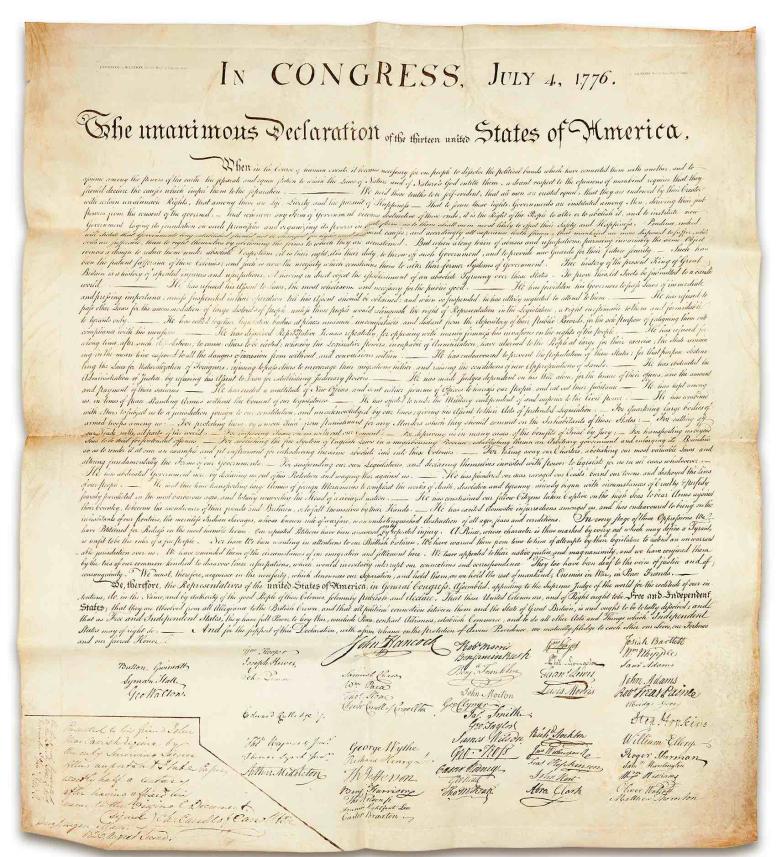Commissioned by then-Secretary of State John Quincy Adams in 1820, Stone’s copperplate engraving on vellum is considered the most accurate representation of the original 1776 document. This specific copy is one of two presented to Founding Father Charles Carroll of Carrollton in 1824 (the other is in the collection of the Maryland Center for History and Culture). It then passed to Carroll’s granddaughter and executrix Emily Caton and her husband John MacTavish, and subsequently descended in a Scottish family to the present owner. Prior to its discovery in an ancestral Scottish home by Cathy Marsden, Specialist in Rare Books, Manuscripts & Maps at Lyon & Turnbull in Edinburgh, the document had been unaccounted for for 177 years. “It was a wonderful surprise to find the Stone facsimile unknowingly hidden in the family home,” says Marsden. “What at first glance appeared to be an unassuming old document nestled within a pile of papers, has turned out to be a fascinating and important piece of American history.”
According to Seth Kaller’s current census of the Stone facsimiles, of the original 201 copies printed, approximately 52 survive. Says Darren Winston, head of Freeman’s Books and Manuscripts department, “I marvel that this amazing document probably left America in the mid-19th century on a sailing ship bound for the British Isles, then likely continued by horse-drawn coach or rail—or both—to Scotland, and the whole journey probably took six weeks. 177-odd years later, it was rediscovered and shipped back across the Atlantic, this time by automobile and airplane, and it took two days. That’s not just a long time between trips; that’s practically the entire history of transportation! Now, not only has it returned ‘home,’ but it is about to be offered for sale in the same city where its original owner put quill to paper on August 2, 1776, and signed his name in support of American independence.”
Founded in 1805 mere blocks from Independence Hall, Freeman’s is America’s oldest auction house, and throughout its storied history has had the privilege of stewarding the sale of numerous historically significant items, including the 1969 sale of John Dunlap’s 1776 broadside of the Declaration of Independence, which sold for an unprecedented $404,000 ($2.97 million in today’s dollars). Freeman’s upcoming July 1 sale continues this long-standing tradition, offering collectors the opportunity to own a piece of previously-unaccounted-for American history, and underscoring Freeman’s pride of place as Philadelphia’s international auction house.

















